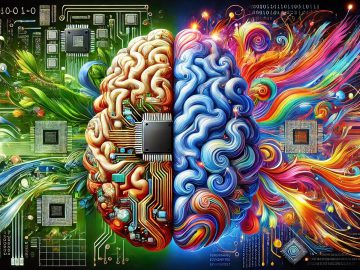Join our daily and weekly newsletters for the latest updates and exclusive content on industry-leading AI coverage. Learn More
Elon Musk’s AI company xAI released its latest language model, Grok 2, on Tuesday, introducing powerful image generation capabilities that have flooded X.com (formerly known as Twitter) with controversial content.
Within hours of its launch, X.com users reported a deluge of AI-generated images depicting graphic violence, explicit sexual content and manipulated photos of public figures in offensive situations.
The rapid proliferation of controversial content on X.com aligns with the platform’s well-known laissez-faire approach to content moderation. It also marks a significant departure from the cautious strategies adopted by other leading AI companies.
Google, OpenAI, Meta and Anthropic have implemented strict content filters and ethical guidelines in their image-generation models to prevent the creation of harmful or offensive material.
Grok 2’s unrestricted image generation capabilities, on the other hand, reflect Musk’s long-standing opposition to stringent content moderation on social media platforms.
By allowing Grok 2 to produce potentially offensive images without apparent safeguards, xAI has reignited the debate over tech companies’ role in policing their own technologies. This hands-off approach stands in stark contrast to the industry’s recent focus on responsible AI development and deployment.
The release of Grok 2 comes just six months after Google’s struggles with its own AI image generator. Google’s Gemini AI faced criticism for being overly “woke” in its image generation, producing historically inaccurate and bizarrely diverse images in response to user prompts.
Google admitted that its efforts to ensure diversity “failed to account for cases that should clearly not show a range” and that its AI model became “way more cautious” over time, refusing to answer even innocuous prompts.
Google’s senior vice president Prabhakar Raghavan explained, “These two things led the model to overcompensate in some cases, and be over-conservative in others, leading to images that were embarrassing and wrong.” As a result, Google temporarily paused Gemini’s image generation feature for people while it worked on improvements.
Grok 2, on the other hand, appears to have no such restrictions, aligning with Musk’s long-standing opposition to content moderation on social media platforms.
By allowing Grok 2 to produce potentially offensive images without apparent safeguards, xAI has launched a new chapter in the debate over tech companies’ role in policing their own technologies.
The ethics tightrope: Balancing innovation and responsibility in AI
The AI research community has reacted with a mix of fascination and alarm. While Grok 2’s technical capabilities are impressive, the lack of adequate safeguards raises serious ethical concerns.
The incident highlights the challenges of balancing rapid technological advancement with responsible development and the potential consequences of prioritizing unrestricted AI capabilities over safety measures.
The impressive tech behind Grok-2 raises ethical questions similar to those faced by OpenAI, while its focus on performance over stringent safety could lead to faster, but less reliable, outputs. #AIethics
HN: https://t.co/TEGj6ZxK6Y
— HackerNewsX (@HackerNewsX) August 14, 2024
For enterprise technical decision-makers, the Grok 2 release and its aftermath carry significant implications. The incident underscores the critical importance of robust AI governance frameworks within organizations. As AI tools become more powerful and accessible, companies must carefully consider the ethical implications and potential risks associated with deploying these technologies.
The Grok 2 situation serves as a cautionary tale for businesses considering the integration of advanced AI models into their operations. It highlights the need for comprehensive risk assessment, strong ethical guidelines and robust content moderation strategies when implementing AI solutions, particularly those with generative capabilities. Failure to address these concerns could lead to reputational damage, legal liabilities and erosion of customer trust.
It seems Grok 2 has very lax guardrails or bias resistance (esp when coupled with Flux) and Musk acolytes are already beginning to defend it to the hilt!
Hard to make progress when confirmation bias swamps everything
— Andrew Maynard (@andrewmaynard.bsky.social) (@2020science) August 14, 2024
Moreover, the incident may accelerate regulatory scrutiny of AI technologies, potentially leading to new compliance requirements for businesses using AI.
Technical leaders should closely monitor these developments and be prepared to adapt their AI strategies accordingly. The controversy also emphasizes the importance of transparency in AI systems, suggesting that companies should prioritize explainable AI and clear communication about the capabilities and limitations of their AI tools.
This development underscores the growing tension between AI innovation and governance. As language models become increasingly powerful and capable of generating realistic images, the potential for misuse and harm grows exponentially. The Grok 2 release demonstrates the urgent need for industry-wide standards and potentially stronger regulatory frameworks to govern AI development and deployment.
The release also exposes the limitations of current content moderation strategies on social media platforms. X.com’s hands-off approach to moderation is being put to the test as AI-generated content becomes increasingly sophisticated and difficult to distinguish from human-created material. This challenge is likely to become more acute as AI technologies continue to advance.
As the situation unfolds, it’s clear that the release of Grok 2 marks a pivotal moment in the ongoing debate over AI governance and ethics. It highlights the dichotomy between Musk’s vision of unfettered AI development and the more cautious approach favored by much of the tech industry and AI research community.
The coming weeks will likely see increased calls for regulation and industry-wide standards for AI development. How xAI and other companies respond to this challenge could shape the future of AI governance. Policymakers may feel compelled to act, potentially accelerating the development of AI-specific regulations in the United States and other countries.
For now, X.com users are grappling with a flood of AI-generated content that pushes the boundaries of acceptability. The incident serves as a stark reminder of the power of these technologies and the responsibility that comes with their development and deployment. As AI continues to advance rapidly, the tech industry, policymakers and society at large must confront the complex challenges of ensuring these powerful tools are used responsibly and ethically.
VB Daily
Stay in the know! Get the latest news in your inbox daily
Thanks for subscribing. Check out more VB newsletters here.
An error occured.




